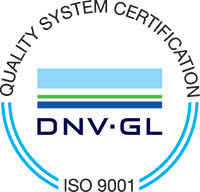In years gone by, the process specified was to "pickle and passivate"- a two-step method in order to create a surface on stainless steel that would be resistant to corrosion. Today, we differentiate between the two. It is two separate processes. Pickling (or Chemical Descaling) is done to remove scale and to clean the part before the passivation process takes place. The passivating of stainless steel is a post-fabrication process with the end goal of making the surface more passive and corrosion resistant by restoring the surface to the original characteristics with a protective oxide film.
How Does Passivation Work?
The passivation process returns the stainless steel or other metals back to its original specifications by removing unwanted debris and oils from the surface and then submerging the part into a passivating bath. When a part is machined, various particles can permeate the surface of the base metal, weakening it’s resistance to corrosion and making the part more susceptible to environmental factors. Debris, dirt and other particles and residue such as free iron, grease and machining oils all affect the strength of the natural surface and can become embedded in the surface during the machining process. These often go unseen to the human eye and are often the cause of the deterioration. As stated above, “passive” is defined as being less affected by environmental factors. The process improves and purifies the surface of the part. The restored surface acts as a protective coating to environmental factors such as air, water, and other extreme environments. It is important to note that passivation does not change the outward appearance of the base metal.
Advantages of Passivation
- Improved Corrosion Resistance
- Uniform, Smooth Appearance & Finish
- Deburring (Polished Surface)
- Cleanliness
- Improved & Extended Life of Product
Stainless Passivation
The passivation of stainless steel is a process performed to make a surface passive, i.e., a surface film is created that causes the surface to lose its chemical reactivity. Stainless steel is already known as being corrosion-resistant, however, the passivation process further strengthens its’ natural coating by improving the exterior surface of the overall part. Stainless steel passivation unipotentializes the stainless steel with the oxygen absorbed by the metal surface, creating a monomolecular oxide film. Passivation can result in the very much-desired low corrosion rate of the metal. Passivation also is accomplished by stainless steel electropolishing.
Delstar is the industry leader in passivation services, delivering the highest quality of passivated products to our customers since 2002. Here at Delstar Metal Finishing, we offer on-site passivation services on all types of metals with a focus on stainless steel, Inconel, Hastelloy, and other nickel alloys. Call or contact us today to speak to a Delstar specialist about passivating!
 Delstar
Delstar
